Tamarind concentrate vs tamarind paste, is one better than the other? No, but tamarind concentrate is easier to use. This unique ingredient is essential is some Asian and Indian recipes so if you love to cook Asian food like I do, it should be in your pantry. Learn how to buy it then pick the form that works best for you.
Here are three of my favourite recipes that I make with tamarind.
- The best Indonesian Chicken Satay with Peanut Sauce.
- Shrimp Pad Thai, the national dish of Thailand. It's typically made with shrimp and chicken but you can use either one or make a vegetarian version with tofu.
- A Pork and Vegetable Curry from northern Thailand. Unlike most Thai curry dishes this one does not use coconut milk.
Jump to:
What Is Tamarind?
Tamarind is the pod of the tamarind tree and it contains seeds that are covered by a fleshy pulp. It adds a unique fruity sourness to many dishes and can be found in Asian and Indian specialty shops. Tamarind concentrate is a thick dark paste sold in small plastic tubs. Tamarind paste, sometimes called pulp, is sold as a pliable block wrapped in plastic. Both will keep at room temperature for more than a year.
How to Use Tamarind Concentrate
Tamarind concentrate is definitely easier to use. Simply reconstitute the thick paste with water. Add 2 parts water to 1 part concentrate and stir until combined. Measure and use in any recipe calling for tamarind paste. If your recipe calls for 3 tablespoons of tamarind paste, mix 1 tablespoon of tamarind concentrate and 2 tablespoons of water.
How to Use Tamarind Paste
Make tamarind paste using equal amounts of boiling water and tamarind pulp from the pliable block. Soak in water for 10-15 minutes then stir with a fork until it is a uniform consistency. Pour the mixture into a strainer pressing on the solids to extract the juice and pulp. Discard the seeds and fibre. This is the paste you will measure to use in any recipe calling for tamarind.
This process can be done with each use or you can prepare the entire package using this method and freeze it in small, usable amounts. Some people use ice cube trays to do this.
If that sounds tedious then go for the tamarind concentrate. I'm completely happy with the results I get using tamarind concentrate for everyday cooking and even when I'm preparing a fancy dinner for friends.
📹 Watch on YouTube
In this video I show you how I prepare, use and substitute both forms of tamarind for everyday cooking. Give me a LIKE if you watch it. At the time of writing, AI can't do that so it's a sign to Google that I'm human.
Should Worcestershire Sauce Have Tamarind
Yes, brand name Worcestershire Sauce (the gluten-filled one) contains tamarind. In my simple version of homemade gluten free Worcestershire sauce I list tamarind as an optional ingredient. Many of you don't have it in your pantry and aren't ready to buy it. When you do, go ahead and add a bit for a more authentic version of Worcestershire.
The Gluten Free Pantry: Asian Ingredients
When I first started cooking gluten free I went through all the Asian ingredients, including tamarind, and got my pantry set up for all the recipes I like to cook. If you haven't done that yet click here for tips and Asian ingredients for a gluten free pantry.
I'd love to hear in the comments below what you make with tamarind, I'm always looking for ways to use the ingredients in my pantry.
__________________________________________________________________________
New here? I've got the help you need to learn to make gluten free food the whole family wants to eat. Subscribe and get your free resource, 29 Tips for GF flour.
🎉 I made it into the Top 100 Gluten Free Blogs for 2025 and the Top 40 Gourmet Food Blogs. Learn all the ways I can help you by visiting this page, Everyday Gluten Free Gourmet.
_________________________________________________________________________
Asian Pantry Ingredients
- Chinese fermented black beans for many uses including gluten free black bean sauce
- Fish sauce, the essential ingredient for Thai and Vietnamese cuisines
- Vegan fish sauce substitute because those friends shouldn't miss out on all the flavours of Thailand and Vietnam.
- Coconut milk, a naturally gluten free ingredient that makes a mean dairy free coconut ice cream and can be whipped as a dairy free replacement for whipping cream.
- For anyone new to Thai cooking this post is an introduction to essential ingredients.



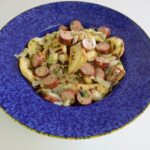



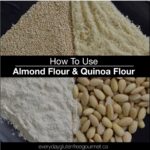
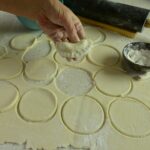
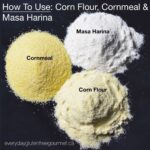
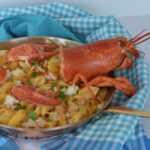

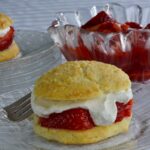
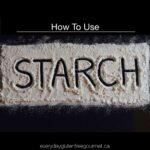
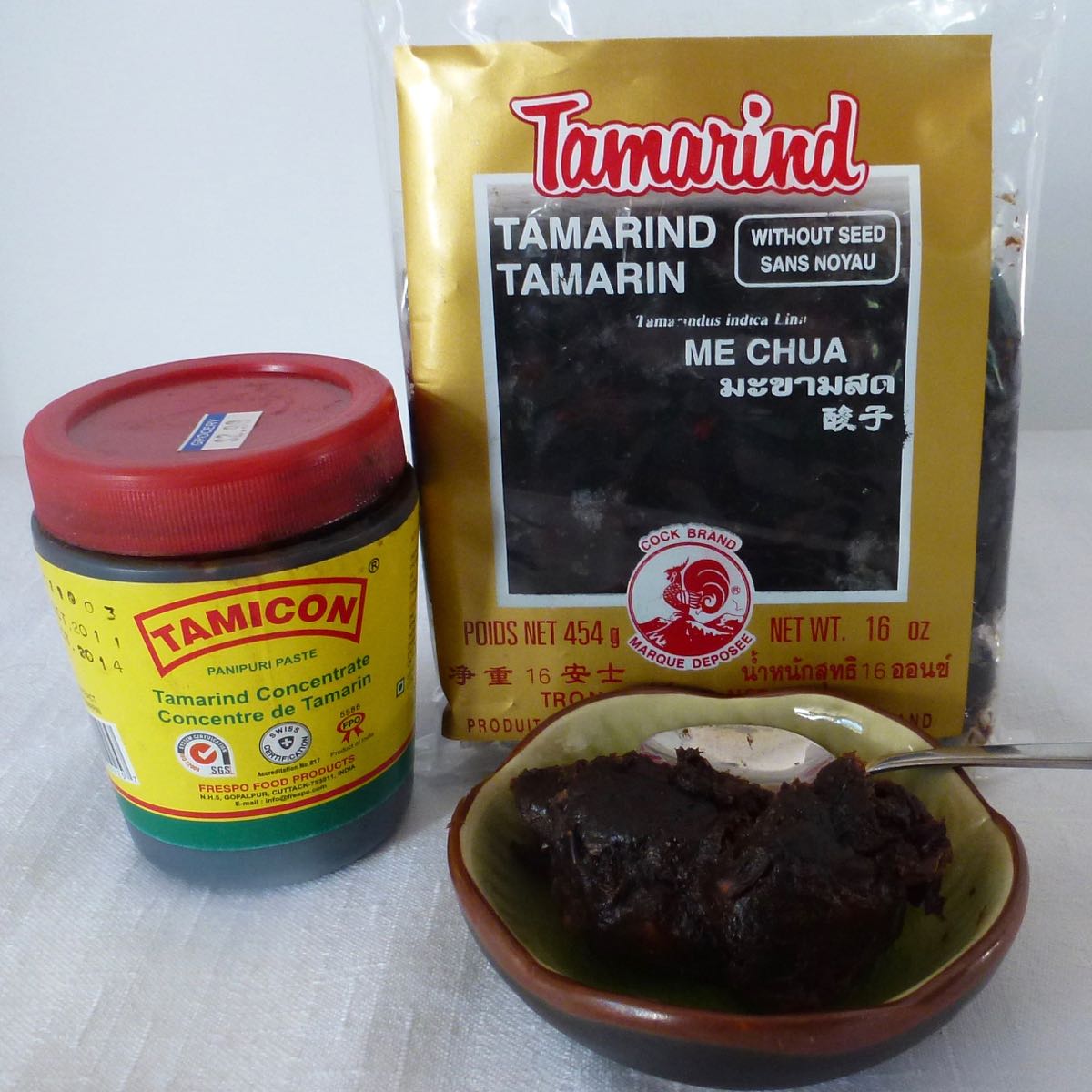

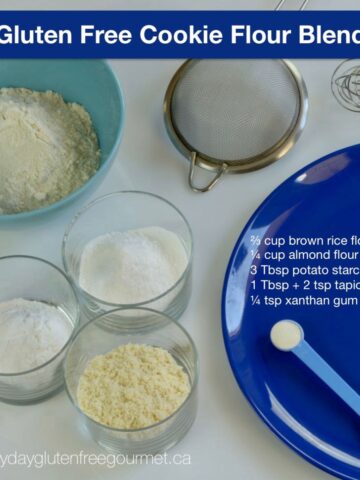




Mirela Marijanovic
Liebe Cindy,
dass war sehr hilfreich.
Ich habe ein Rezept mit 120ml konzentrierter Paste. Wieviel wäre das in Gramm? Ich soll 120ml mit 250 ml heißem Wasser übergießen.
Kannst Du helfen?
lG Mirela
Cinde Little
Hi Mirela. I translated from German to English so will put your question in English first for other followers to read. You wrote, "That was very helpful.
I have a recipe with 120 ml of concentrated paste. How much would that be in grams? I’m supposed to pour 120 ml with 250 ml of hot water. Can you help?"
Yes. That is the correct ratio, 1 part concentrate to 2 parts water. My concentrate is very thick and would not pour. I spoon it into a cup and add boiling water then stir until it is evenly mixed. That is the liquid you will add to your recipe. It will measure about 1 1/2 cups. You asked for it in gram measurements which is slightly different. 120 ml of tamarind concentrate is approximately 150 grams. The water measurement is still going to be 250 ml or about 1 cup since water is not as dense as the tamarind. Since it is a large amount I don't think the differences in these numbers will make a huge difference in your recipe. I hope that helps. Happy cooking!
Laura
Tamarind (tamarindo) is very much used in Mexican candies and drinks as well.
Cinde Little
Thanks for adding that Laura. I've probably had some of those drinks and candies in Mexico but I've never made them. Delicious I'm sure.
Tamicon Foods
Thanks, Jen, I’m glad the video was helpful
Cinde Little
Hi Tamicon Foods! What are the top 3 recipes you suggest when people ask you what to make with tamarind?
Jon
Thank you so much! Perfect. I was unsure how to differentiate between the two. What I want to cook is this. There is a local coffee shop/cafe here in Bangkok that makes breaded shrimp with tamarind chilly sauce that is sooo delicious. They never give enough sauce though, just an artistic dribble leaving me wanting more. so, I though I can make it at home! Both variations, paste and concentrate can be purchased locally and cheaply. Looking forward to experimenting with it. Love that tamarind taste!
Cinde Little
Hi Jon! Thanks for letting me know. Those breaded shrimp sound amazing, I too love the taste of tamarind. Have fun with your recipe testing!
Jen
Hi Cinde,
Thanks for sharing the video. So easy to grasp the variation in tamarind thanks to your explanation.👍😉 Now I’m off to making my pad Thai. 🍜🍤🥚
Cinde Little
Thanks Jen, I'm glad the video was helpful and I'm sure your Pad Thai will be delicious! 😋
Shonya
Can't wait to try, but please improve the formatting for print so one can just print the recipe and also, so it needn't take so many pages.
Cinde Little
Hi Shonya! If you click on the recipe you want to make you'll be taken to that page. Once there it is formatted better for printing, most recipes print on 1 page. The blog posts are very long and not ideal for printing. I hope that helps and good luck with whatever you're making.
Mick
Great video! The descriptions of "how to" online were confusing me and then I found this video. It's so simple and her explanation of how to use the 2 products to get to the same place was simple, Recipe for cooking with it are here also.
Cinde Little
Thanks Mick. I try to be as clear as possible since I found lots of instructions confusing when I was learning to cook. Happy cooking!